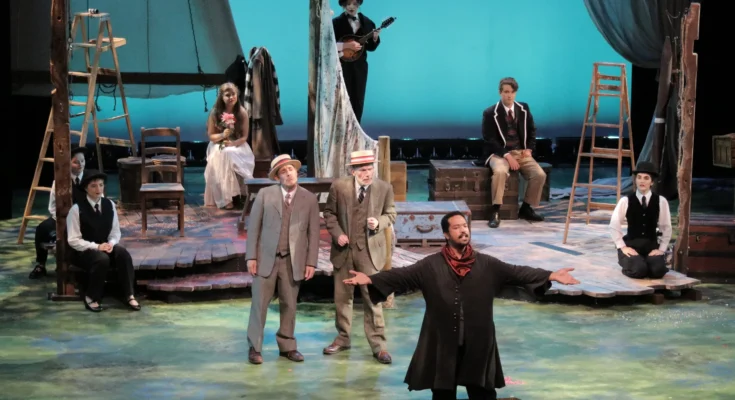In the realm of live performance, stage directing is the invisible hand that transforms a script into a vivid world that grips its audience from the first entrance to the final blackout. When done skillfully, it brings dialogue, movement, design, and emotion together in seamless harmony.
Why Stage Directions Matter
Stage directions are the coded blueprint hidden within the script. They tell performers when to appear, where to stand, how to move, and even what emotion to channel in silence. These written cues breathe life into lines on a page, allowing the audience to see beyond the spoken word.
Directors rely on these instructions to map the flow of the performance, but they also interpret, reshape, and expand them to suit the unique vision they bring to each production.
The Director’s Vision: The Core of Every Show
Every memorable production begins with a clear, unified artistic vision. The director is the guide who shapes that vision into reality, aligning actors, designers, and crew around a single purpose. Whether it’s a gritty tragedy, a sparkling comedy, or an avant-garde experiment, the director’s concept gives the show its identity.
Perfecting Blocking: Directing Actor Movement
Blocking is the carefully planned choreography of the stage. It dictates when actors cross, where they pause, and how they share space with others. Good blocking clarifies power dynamics, emphasizes key moments, and keeps the audience engaged.
A director must also master the language of stage geography — upstage, downstage, stage left, andstage right — using these zones to enhance the narrative. They ensure that every movement has meaning and every pause holds weight.
Motivated Movement and Visual Storytelling
Aimless wandering on stage breaks the spell of storytelling. Directors guide actors to move with purpose, each step an extension of character motivation. Together, they craft stage pictures — visually striking arrangements that capture relationships and themes in a single glance.
Levels, angles, and distances all contribute to these images. Triangular formations, diagonals, and layered depths turn the stage into a living painting that shifts with each scene.
The Power of Pace and Rhythm
The heartbeat of a production is its pacing and rhythm. Directors control tempo to heighten tension, release laughter, or slow time for dramatic impact. Fast-paced exchanges build urgency; lingering silences can speak louder than words.
A director coaches actors on vocal delivery, gestures, and pauses, ensuring the energy of each scene matches its emotional intent. When pace and rhythm work in concert, the audience remains fully invested from curtain up to curtain down.
Designing the World: Collaboration with Designers
Stage directing is never a solo act. Directors partner with designers to craft an immersive world that supports their vision.
- Set Designers build physical spaces that ground the story in a believable time and place.
- Lighting Designers paint the atmosphere with color, shadow, and focus, guiding the audience’s eye and mood.
- Costume Designers shape characters through clothing, revealing personality, era, and transformation.
This collaboration ensures that every element — props, scenery, costumes, and lighting — aligns with the director’s concept, forming a cohesive visual language.
Casting: Finding the Perfect Match
Finding the right cast is half the battle. Directors craft detailed casting calls to attract actors who fit the vision, sometimes encouraging diverse or unconventional casting to breathe new life into familiar roles.
Auditions test more than talent; they reveal chemistry, adaptability, and a performer’s instinct to take risks. Directors look for artists who can grow through rehearsal and bring depth to their roles beyond what’s written on the page.
Rehearsals: Shaping Raw Material into Art
Rehearsal rooms are creative laboratories. Here, lines are tested, blocking is refined, and performances evolve. Directors must balance authority with openness, giving actors the freedom to experiment while steering the process toward their intended result.
The stage manager is the director’s right hand, documenting every decision, cue, and note. Their role ensures consistency and communication between all departments, allowing the director to focus fully on the artistic aspects.
Directing Across Genres
Not all shows follow the same rules. Each genre demands unique techniques:
- Comedies thrive on quick timing, clever blocking, and playful improvisation.
- Dramas require deeper psychological exploration, with subtle shifts and slow builds.
- Musicals blend acting with music and dance, demanding coordination with choreographers and music directors.
- Experimental and immersive theatre may throw out the rulebook entirely, inviting directors to break traditional staging and audience boundaries.
Flexibility is key. Great directors adapt their methods to the demands of each script and style.
Stretching Budgets: Creative Solutions
Limited funding doesn’t have to limit storytelling. Directors working on tight budgets learn to prioritize: powerful acting and clear storytelling often matter more than elaborate sets. Minimalist design, reused costumes, and imaginative props can produce unforgettable moments when guided by a compelling vision.
Handling Challenges and Unexpected Surprises
Live theatre rarely goes exactly as planned. Forgotten lines, missed cues, or technical glitches are part of the territory. Directors plan contingencies, rehearse for the unexpected, and maintain calm under pressure — ensuring that the audience experiences seamless magic no matter what happens behind the scenes.
Conclusion
Stage directing is both an art and a craft. It calls for vision, leadership, adaptability, and an eye for detail that ties every piece of the production together. When a director does their work well, the audience doesn’t see the directing at all — they simply lose themselves in the world unfolding before them.
From inspired blocking to authentic performances, from lighting cues to costume details, the director’s influence is woven into every heartbeat of the show. It is a role that demands dedication, collaboration, and boundless creativity — and for those who master it, the reward is the unforgettable magic of live theatre.





